 December 20, 2018 John E. Ross, KD8IDJ, Editor
| ||||||
This is the last edition of The ARRL Letter for 2018. The next edition will publish on January 3, 2019. We wish everyone a safe and happy holiday season. ARRL Petitions FCC to Incorporate Parity Act Provisions into its Amateur Radio Rules The ARRL has filed a Petition for Rulemaking (PRM) asking the FCC to amend its Part 97 Amateur Service rules to incorporate the provisions of the Amateur Radio Parity Act. The Petition has not yet been assigned a rule making (RM) number and is not yet open for public comment. In the past, the FCC has said that it would not take such action without guidance from the US Congress, but, as ARRL's Petition notes, Congress "has overwhelmingly and consistently" offered bipartisan support for the Amateur Radio Parity Act.
Specifically, ARRL is proposing that the FCC amend Part 97 by adding a new subsection under §97.15 that prohibits and ceases the enforcement of "any private land use restriction, including restrictive covenants and regulations imposed by a community association," that either fails to permit a licensee to install and maintain an effective outdoor antenna capable of operation on all Amateur Radio frequency bands; on property under the exclusive use or control of the licensee; precludes or fails to permit Amateur Service communications, or which does not constitute the minimum practicable restriction on such communications to accomplish the lawful purposes specifically articulated in the declaration of covenants of a community association seeking to enforce such restriction. ARRL's proposed rule would not affect any existing antenna approved or installed before the effective date of a Report and Order resulting from ARRL's petition.
"Private land use regulations are not 'contracts' in the sense that there is any meeting of the minds between the buyer and seller of land," ARRL said. "Rather, they are simply restrictions on the use of owned land, imposed by the developer of a subdivision... They bind all lots in the subdivision." ARRL noted in its Petition that an increasing number of homes available for purchase today are already subject to restrictive covenants prohibiting outdoor antennas. In addition, ARRL pointed out that the Telecommunications Act of 1996 gives the FCC jurisdiction "to preempt private land use regulations that conflict with federal policy..." "It is now time for actual and functional parity in the Commission's regulations in order to protect the strong federal interest in Amateur Radio communications," ARRL said. Read more. ARRL's Logbook of The World Tops 1 Billion QSO Records As of December 19, more than 1 billion contact records have been entered into ARRL's Logbook of The World (LoTW) system. And, while 1 billion QSO records represents a significant milestone, a more important statistic may be the nearly 187 million contacts confirmed via LoTW over its 15-year history. The one billionth record was uploaded by 7X3WPL, the Sahara DX Radio Club, at 2332 UTC for a 20-meter SSB contact with with Davide Cler, IW1DQS, that took place on December 28, 2016. The upload resulted in a match (QSL).
LoTW continued with few major changes until October 2011, when a perfect storm struck -- a large ingestion of logs after the CQ World Wide DX Contest and a freak snowstorm that knocked out power for more than a week in most places. Field Services and Radiosport Department Manager Norm Fusaro, W3IZ, said uninterruptible power source (UPS) backup power quickly depleted in the days-long power outage. "When the system came back online, it was overwhelmed with the amount of data coming in and could not keep up," Fusaro said. "The water was coming in faster than the pumps could pump it out. Crash!" The disaster was a blessing in disguise, though, because it revealed weaknesses in the LoTW software and hardware. Today, LoTW boasts some 112,000 users in all 340 DXCC entities, and 75% of all DXCC applications are filed via LoTW. Fusaro said the League spent tens of thousands of dollars for new hardware. IT Manager Mike Keane, K1MK, implemented code changes to expedite log processing by giving priority to small- to medium-sized logs and inserting mega-files as openings occurred. Fusaro said a lot of the large files contained duplicate data, bogging down the process so much that users were resending logs already in the queue. Through all of this, not one QSO record was lost, because LoTW uses a redundant backup process, Fusaro said. A LoTW users' group reflector and a queue-processing status page were set up. With better communication, Fusaro said, the system attracted additional numbers. Today, LoTW boasts some 112,000 users in all 340 DXCC entities, and 75% of all DXCC applications are filed via LoTW, which accounts for 86% of confirmations applied. Now, ARRL is looking at the development of LoTW 2.0, Fusaro said. "Over the years, we have added more awards that can be applied for using LoTW QSL credits: VUCC, Triple Play, and two CQ awards -- WPX and WAZ." "The service still has room for a lot of improvement, but it continues to grow and is the preferred method of confirming QSOs because it strives to protect the integrity of DXCC and all awards," Fusaro said. FCC Releases Plan in the Event of a Partial Government Shutdown The FCC has released its Plan for Orderly Shutdown in case funds become unavailable to continue operation. "If a potential lapse in appropriations is imminent, the FCC will determine whether and for how long prior-year funds are available to continue agency operations during a lapse," the FCC said in its plan. According to the plan, if prior-year funds are available, the FCC will remain open beyond a lapse. If prior-year funds are unavailable or exhausted during the lapse in appropriations, the FCC will commence a shutdown.
According to the plan, during such a shutdown, all FCC activities will cease "other than those immediately necessary for the protection of life or property, performing other excepted activities, or those funded through a source other than lapsed appropriations." A short-term spending bill to fund the government through February 8, 2019, is now in play, in an effort to avert a partial government shutdown this week. New Amateur Radio Packet Gear Awaits Unpacking, Installation on Space Station New Amateur Radio on the International Space Station (ARISS) packet equipment awaits unpacking and installation on board the station after arriving in November as part of the cargo transported via a Russian 71P Progress resupply vehicle. The new packet module for NA1SS will replace the current packet gear, which has been intermittent over the past year.
The ISS packet system was reported to have gone down in July 2017, although it unexpectedly came back to life the following summer. At the time of the failure, NASA ISS Ham Radio Project Engineer Kenneth Ransom, N5VHO, said the revived system would fill the gap until the replacement packet module arrived. The packet system operates on 145.825 MHz. ARISS hardware team members on the ground were able to locate a functional duplicate of the ISS packet module that has been in use on the ISS for 17 years. ARISS said the subsequent installation will depend on the crew's busy schedule. In an email to ARISS and other groups CASIS supports, Barstow pointed out that ARISS is an official backup system for astronauts to talk with Mission Control in the unlikely failure of the station's primary communication systems.
Satellite stalwart and ARISS supporter Patrick Stoddard, WD9EWK, won the December 2018 QST Cover Plaque Award for his article, "Making Digital Contacts through the ISS." Current International Space Station (ISS) crew members Serena Auñón-Chancellor, KG5TMT, Alexander Gerst, KF5ONO, and cosmonaut Sergey Prokopyev were scheduled to return to Earth on December 20. The Doctor Will See You Now! "Ground Plane Antennas" is the topic of the new (December 20) episode of the "ARRL The Doctor is In" podcast. Listen...and learn!
Every 2 weeks, your host, QST Editor-in-Chief Steve Ford, WB8IMY, and the Doctor himself, Joel Hallas, W1ZR, will discuss a broad range of technical topics. You can also email your questions to doctor@arrl.org, and the Doctor may answer them in a future podcast. Enjoy "ARRL The Doctor is In" on Apple iTunes, or by using your iPhone or iPad podcast app (just search for "ARRL The Doctor is In"). You can also listen online at Blubrry, or at Stitcher (free registration required, or browse the site as a guest) and through the free Stitcher app for iOS, Kindle, or Android devices. If you've never listened to a podcast before, download our beginner's guide. US Radio Amateurs Help to Make YOTA Month Happen in Ethiopia Two US radio amateurs helped to make Youngsters on the Air Month (YOTA Month) a success in Ethiopia. YOTA Month takes place each December, and several participating stations obtain permission to use YOTA suffix call signs for the occasion. Ken Claerbout, K4ZW, and Bob Johnson, W9XY, traveled to Addis Ababa to assist the young members of the Ethiopian Amateur Radio Society (EARS) as they transformed ET3AA at Addis Ababa University Institute of Technology into ET3YOTA, making their country available on the air during YOTA Month. A check of spots on DX Summit shows that ET3YOTA has mostly been active on 20-meter SSB, with some operation on 160 and 40 meters.
"The operators use SSB and FT8, although some would like to learn CW," Claerbout told ARRL. "They all do quite well actually on SSB. Bob, W9XY, worked with them a bit, to give them some pointers, but they have no problem turning on the radio, calling CQ, and facing the masses." Several students at the university hold US Amateur Radio licenses because the Ethiopian government has not issued any licenses in some years, Claerbout explained. In a narrative he shared with The Daily DX, Claerbout said the goal for the visit was to spend a lot of time on the air. "It was a chance for us to work with them, to refine operator skills, and jointly work on some station projects," he said. "This is a very enthusiastic group. They love to get on the air and operate!" Claerbout, Johnson, and the Ethiopian operators obtained permission to stay at the university for three nights to activate 80 and 160 meters. They erected an inverted-L antenna supported with an 18-meter fiberglass pole. "It is one of the ugliest antennas I've ever built but, boy, did it work, far beyond my expectations," Claerbout said. The antenna's location above a university building's metal roof provided an excellent RF ground, but manmade noise did turn out to be a major issue -- a steady S-9 +20 dB on 160 meters, and a mere S-9 on 80 meters. Unfortunately, using a noise-cancelling device didn't help.
"My goal for the 3 nights, along with working as many people as we could, was to see if operating [the] low bands from the club station would be feasible for future visits," Claerbout said. "I believe the noise can be dealt with to some degree, making future low-band operations a real possibility. On top band, many signals were right at the noise. Bob and I both agree that even knocking down the noise an S-unit or two would [open up another layer] of signals." Claerbout conceded that FT8 would be "very effective" in this sort of situation, but he said FT8 holds no interest for him. "I like the challenge this situation provides and developing solutions to overcome it, with the young engineers at the club station," he said. The ET3YOTA call sign will be used for the rest of December, with operation on SSB and possibly some FT8. Plans call for uploading logs to LoTW. Claerbout said, "[M]y involvement with the club is one of the coolest things I have done in Amateur Radio. I think W9XY would agree." He thanks DX Engineering and those who have helped foster the ham community in Ethiopia. "Youth and Amateur Radio in Ethiopia is flourishing," he concluded. Polish the Brass: Straight Key Night is Just Ahead Every day is a good day to operate on CW, but set some time aside on New Year's Eve and into New Year's Day to enjoy Straight Key Night (SKN). The annual event begins at 0000 UTC on January 1, 2019 Participants are encouraged to get on the air and simply enjoy conversational CW contacts, preferably using a straight key (hand key) or a semi-automatic key (bug). Activity traditionally centers on CW segments in the HF bands. There are no points or obligatory exchange -- the only requirement is to have fun. Send your SKN list of stations contacted and your votes for "Best Fist" and "Most Interesting QSO" by January 31.
AMSAT will dedicate its third annual CW Activity Day to the memory of past AMSAT President Bill Tynan, W3XO, January 1, 2019, 0001 - 2400 UTC. No rules; just operate CW through any Amateur Radio satellite. Straight keys and "bugs" are encouraged, but not required. -- Thanks to Ray Soifer, W2RS Fessenden Commemorative Transmission Set for Christmas Eve As he's done in years past, Brian Justin, WA1ZMS, of Forest, Virginia, will commemorate what may have been the first radio broadcast to include speech and music by experimenter Reginald Fessenden on Christmas Eve 1906. Justin will fire up his vintage-style transmitter operating on 486 kHz under Experimental license WI2XLQ to mark
the 112th anniversary of Fessenden's accomplishment. Justin will begin his transmission on December 24 at 1700 UTC and continue until December 26 at 1659 UTC. Historic accounts say Fessenden played the violin -- or a recording of violin music -- and read a brief Bible verse, astounding radio experimenters and shipboard operators who heard the broadcast. For his transmitter in 1906, Fessenden used an ac alternator modulated by placing carbon microphones in series with the antenna feed line. Justin's homebuilt station is slightly more modern, based on a 1921 vacuum-tube master oscillator power amplifier (MOPA) design, using a UV-202 tube. The transmitter employs Heising AM modulation, developed by Raymond Heising during World War I. Send listener reports directly to Brian Justin, WA1ZMS. IEEE Microwave Society Recognizes Radio Amateurs The IEEE Microwave Theory and Techniques Society (MTT-S) has announced its 2019 award recipients. The list includes several radio amateurs.
In addition, well-known technical author Rick Campbell, KK7B, was elected an IEEE fellow in 2019 for his work in extending wafer probing into the millimeter-wave range. Awards will be presented during the International Microwave Symposium (IMS), June 2 - 7, 2019, in Boston. In Brief...
The K7RA Solar Update Tad Cook, K7RA, Seattle, reports: On Wednesday, December 19, Spaceweather.com reported, "Solar minimum conditions are in effect," adding, "The sun has been without sunspots for 209 days in 2018." Spaceweather.com said the most recent similar stretch of blank suns was in 2009, "when the sun was experiencing the deepest solar minimum in a century."
Average daily sunspot numbers for the past week were 3.4, down from 9.7 in the previous week. Average daily solar flux declined slightly, from 70.7 to 70.4. The average planetary A index decreased from 8 to 4.1, while the average mid-latitude A index went from 6.4 to 3. Predicted solar flux for the next 45 days is 70 on December 20 - 23; 72 on December 24 - 26; 71 on December 27; 72 on December 28 - January 4; 70 on January 5 - 16; 72 on January 17 - 31, and 70 on February 1 - 2. The predicted planetary A index is 5 on December 20 - 23; 8 on December 24; 5 on December 25 - 27; 8, 12, 10, and 8 on December 28 - 31; 5 on January 1 - 2; 10, 12, 10, 10, and 8 on January 3 - 7; 5 on January 8 - 12; 8 on January 13; 5 on January 14 - 23; 8, 12, 10, and 8 on January 24 - 27; 5 on January 28 - 29, and 10, 12, 10, and 10 on January 30 - February 2. Sunspot numbers for December 13 - 19 were 0, 12, 12, 0, 0, 0, and 0, with a mean of 3.4. The 10.7-centimeter flux was 70.2, 70.8, 71.2, 69.8, 70.1, 70.4, and 70.2, with a mean of 70.4. Estimated planetary A indices were 3, 3, 2, 2, 6, 7, and 6, with a mean of 4.1. Estimated mid - latitude A indices were 2, 3, 1, 1, 5, 5, and 4, with a mean of 3. Share your reports and observations. Just Ahead in Radiosport
See the ARRL Contest Calendar for more information. For in-depth reporting on Amateur Radio contesting, subscribe to The ARRL Contest Update via your ARRL member profile email preferences. Upcoming ARRL Section, State, and Division Conventions
Find conventions and hamfests in your area.
. .
Subscribe to...
Free of charge to ARRL members...
| ||||||
 "Private land use regulations which either prohibit or which do not accommodate the installation and maintenance of an effective outdoor antenna in residences of Amateur Service licensees are unquestionably the most significant and damaging impediments to Amateur Radio Service communications that exist now," ARRL said in its Petition. "They are already precluding opportunities for young people to become active in the avocation and to conduct technical self-training and participate in STEM [science, technology, engineering, and mathematics] learning activities inherent in an active, experiential learning environment. Without the relief in this Petition, the future of Amateur Radio is bleak indeed." The proposed amendments would have no effect on the FCC's limited preemption policy in §97.15(b), which pertains to state and municipal governing bodies, ARRL said.
"Private land use regulations which either prohibit or which do not accommodate the installation and maintenance of an effective outdoor antenna in residences of Amateur Service licensees are unquestionably the most significant and damaging impediments to Amateur Radio Service communications that exist now," ARRL said in its Petition. "They are already precluding opportunities for young people to become active in the avocation and to conduct technical self-training and participate in STEM [science, technology, engineering, and mathematics] learning activities inherent in an active, experiential learning environment. Without the relief in this Petition, the future of Amateur Radio is bleak indeed." The proposed amendments would have no effect on the FCC's limited preemption policy in §97.15(b), which pertains to state and municipal governing bodies, ARRL said.%20Logo.png) The proposed provisions reflect the accommodation reached in the ultimate version of the Parity Act bill at the urging of federal lawmakers between ARRL and the Community Associations Institute (CAI), the only organization representing homeowners' associations. "That legislation was passed unanimously by the House of Representatives four separate times and has the support of the Senate Commerce Committee and the current Administration," ARRL stressed.
The proposed provisions reflect the accommodation reached in the ultimate version of the Parity Act bill at the urging of federal lawmakers between ARRL and the Community Associations Institute (CAI), the only organization representing homeowners' associations. "That legislation was passed unanimously by the House of Representatives four separate times and has the support of the Senate Commerce Committee and the current Administration," ARRL stressed.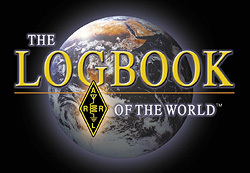 LoTW debuted in 2003 after a lot of behind-the-scenes planning and development. Initially, LoTW got off to a slow start. While user numbers gradually grew to about 5,000, a lot of hams didn't fully understand what LoTW was or how it worked, and opening an account could be cumbersome.
LoTW debuted in 2003 after a lot of behind-the-scenes planning and development. Initially, LoTW got off to a slow start. While user numbers gradually grew to about 5,000, a lot of hams didn't fully understand what LoTW was or how it worked, and opening an account could be cumbersome..jpg) ARRL VEC Manager Maria Somma, AB1FM, said in such situations, the FCC
ARRL VEC Manager Maria Somma, AB1FM, said in such situations, the FCC .jpg) "With the arrival of Progress complete, the crew has to find free time to unpack Progress, uninstall the intermittent module, and then set up and test the replacement packet module," explained Dan Barstow, KA1ARD, senior education manager of the ISS National Laboratory (
"With the arrival of Progress complete, the crew has to find free time to unpack Progress, uninstall the intermittent module, and then set up and test the replacement packet module," explained Dan Barstow, KA1ARD, senior education manager of the ISS National Laboratory (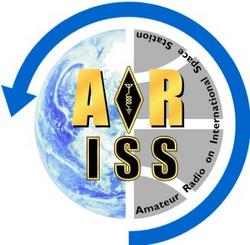 Bartow said that in 2017, hams relayed nearly 89,000 packet messages via the ISS -- an average of 243 every day. The statistic so intrigued and amazed Barstow that he decided to get his Amateur Radio license and gear to join in the activity.
Bartow said that in 2017, hams relayed nearly 89,000 packet messages via the ISS -- an average of 243 every day. The statistic so intrigued and amazed Barstow that he decided to get his Amateur Radio license and gear to join in the activity. Sponsored by
Sponsored by 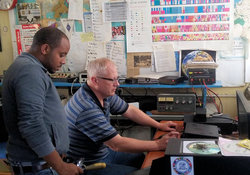
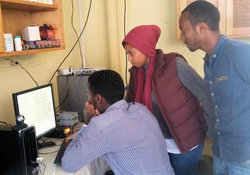
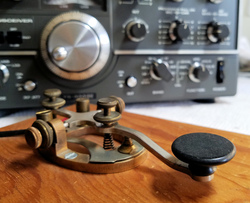 (New Year's Eve in US time zones). The 24-hour event is not a contest, but a day dedicated to celebrating our CW heritage.
(New Year's Eve in US time zones). The 24-hour event is not a contest, but a day dedicated to celebrating our CW heritage.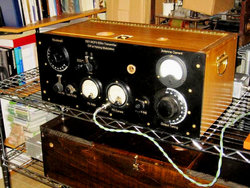
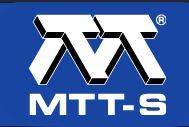
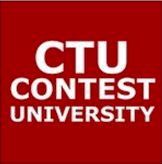 Registration
Registration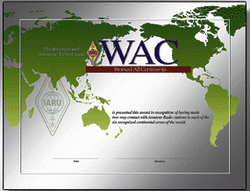 The IARU, which sponsors the Worked All Continents (
The IARU, which sponsors the Worked All Continents (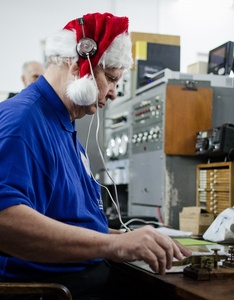 Sweden's Alexanderson alternator station SAQ has planned a Christmas Eve transmission on 17.2 kHz. The transmitter will be tuned up starting at around 0730 UTC, and a message will be transmitted at 0800 UTC. The 200 kW Alexanderson alternator is an electromechanical transmitter dating back to 1924. The event will be streamed live on the Alexanderson Association's
Sweden's Alexanderson alternator station SAQ has planned a Christmas Eve transmission on 17.2 kHz. The transmitter will be tuned up starting at around 0730 UTC, and a message will be transmitted at 0800 UTC. The 200 kW Alexanderson alternator is an electromechanical transmitter dating back to 1924. The event will be streamed live on the Alexanderson Association's 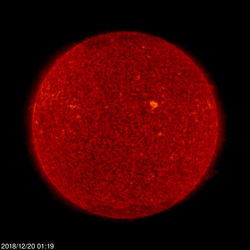 My records show the average daily sunspot number for all of 2009 was 5.05, and average daily solar flux was 70.6. Looking at the past 2 months, the same values were 3.6 and 69.4, so we are clearly in the same sort of minimum. Looking at all the numbers for 2018 to date, we see averages of 6.6 and 69.9.
My records show the average daily sunspot number for all of 2009 was 5.05, and average daily solar flux was 70.6. Looking at the past 2 months, the same values were 3.6 and 69.4, so we are clearly in the same sort of minimum. Looking at all the numbers for 2018 to date, we see averages of 6.6 and 69.9.







